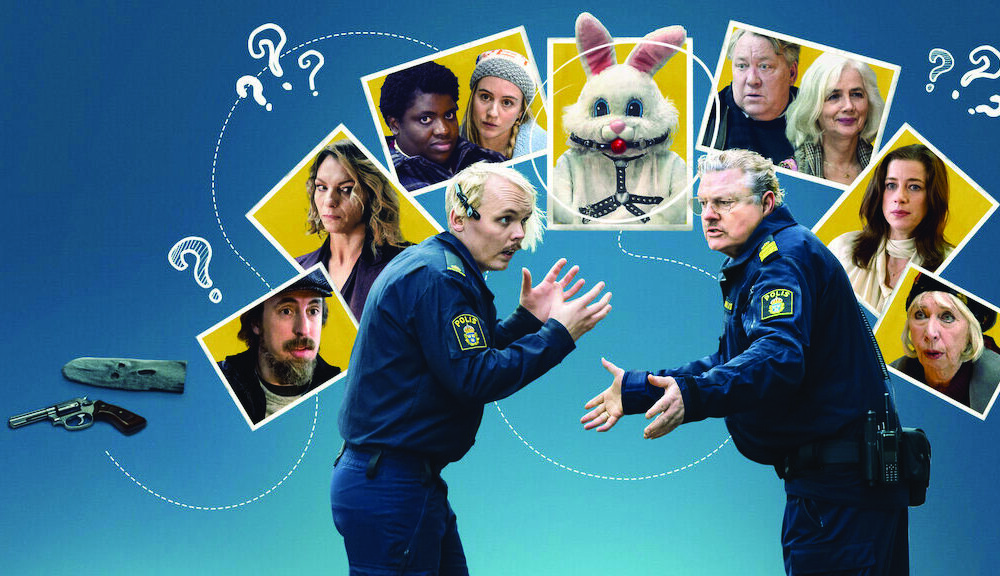Content warning: Mentions of suicide, drug addiction, and violence
Being a bank robber isn’t easy. From attempting to rob a cashless bank, to accidentally taking eight lovable yet bizarre people hostage at an open house, Anxious People’s anti-hero has found himself in a no-win situation. However, as police storm the building to rescue the frazzled hostages, the bank robber is nowhere to be found. It is this central question that plagues the police throughout the six episodes: Where did he go?
Based on Fredrik Backman’s 2020 novel, Anxious People follows local police father-and-son duo Jim (Dan Ekborg) and Jack (Alfred Svensson) as they attempt to make sense of this seemingly nonsensical hostage crisis. While the book focusses on the characters who were taken hostage, the Swedish-language limited series spends more time on the police investigation, for which the cops are wildly unequipped. Their incompetence adds humour to the narrative, such as when Jack runs out during a haircut with a trailing hairstylist and Jim steals several pizzas from a local pizzeria to hand-deliver a meal to the armed bank robber—one of his bizarre requests.
The informal and unorganized nature of the duo balances with the heavier themes of trauma and redemption within the show. At its core, Anxious People is a story about getting second chances and coping with life’s messiness. After failing to prevent a man’s suicide when he was 12, Jack strives to help those in need and prove his competency as a police officer, despite living in his father’s shadow. On the other hand, Jim is more concerned with helping his daughter—who struggles with addiction—than working on the case. As Jim sees it, nothing got stolen and nobody got hurt (except for a hostage’s bloody nose and Jack being hit in the eye with a lime); therefore, there is no need to search for the missing robber.
Unfortunately, while Jim and Jack are compelling characters, their prevalence in the six episode series limits any exploration of the eight complex characters who Backman created in the novel. For example, married couple Anna-Lena (Marika Lagercrantz) and Roger (Leif Andrée) have little in common besides their joint hobby of flipping apartments. After Anna-Lena undermines her husband by hiring Lennart (Per Andersson) to creatively lower the asking price, Roger struggles to trust his wife. Yet the real communication issue is between the show and audience, as real—and fictional—relationships are not magically fixed in a single afternoon, especially with limited verbal interactions between husband and wife. Similarly, the series neglects to show the novel’s most compelling love story, the one of Lennart and Zarah (Anna Granath). As a straight-laced wealthy lawyer, Zarah is wildly different from Lennart, who is paid to create chaos. While in the novel the two kindle a delightful slow-burn romance, the series expects its audience to root for the couple without revealing their original chemistry.
These rushed storylines are almost insulting to the characters that Backman creates in his novel, whose actions and motives are well explained—not to mention highly entertaining, even without the television visuals. Although the actors make the best out of a questionable situation with top-notch physical comedy, it’s hard to achieve a full emotional range while being constricted by a weak script and rushed pace.
By neglecting to round out these eight pivotal characters, the series turns hollow, relying on two cop characters who Backman created to be about as complex as the average sidekick. As a show, the narrative loses its focus, resulting in an underwhelming story that fails to reach its potential.









